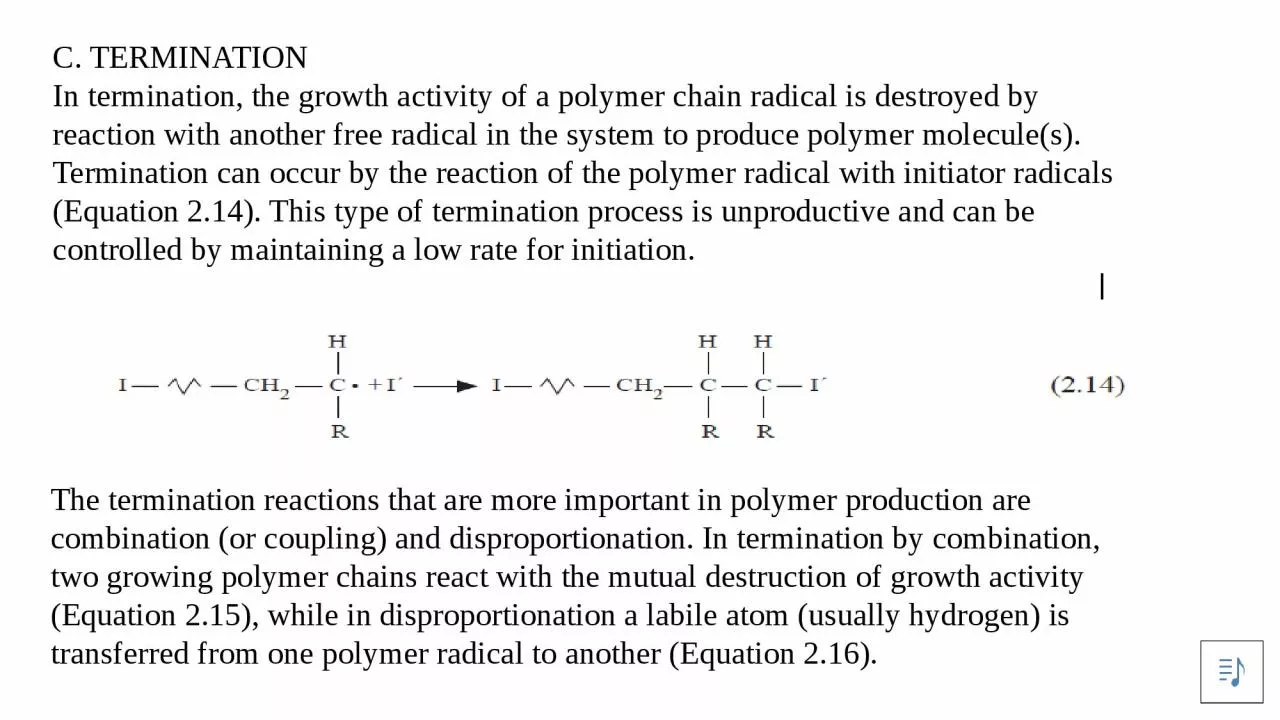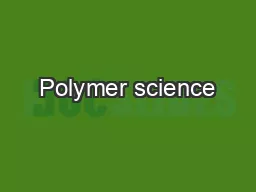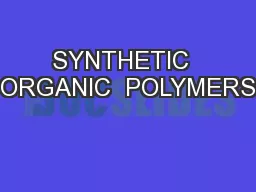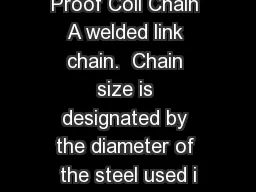PPT-C. TERMINATION In termination, the growth activity of a polymer chain radical is destroyed
Author : SupremeGoddess | Published Date : 2022-08-04
reaction with another free radical in the system to produce polymer molecules Termination can occur by the reaction of the polymer radical with initiator radicals
Presentation Embed Code
Download Presentation
Download Presentation The PPT/PDF document "C. TERMINATION In termination, the growt..." is the property of its rightful owner. Permission is granted to download and print the materials on this website for personal, non-commercial use only, and to display it on your personal computer provided you do not modify the materials and that you retain all copyright notices contained in the materials. By downloading content from our website, you accept the terms of this agreement.
C. TERMINATION In termination, the growth activity of a polymer chain radical is destroyed: Transcript
Download Rules Of Document
"C. TERMINATION In termination, the growth activity of a polymer chain radical is destroyed"The content belongs to its owner. You may download and print it for personal use, without modification, and keep all copyright notices. By downloading, you agree to these terms.
Related Documents














